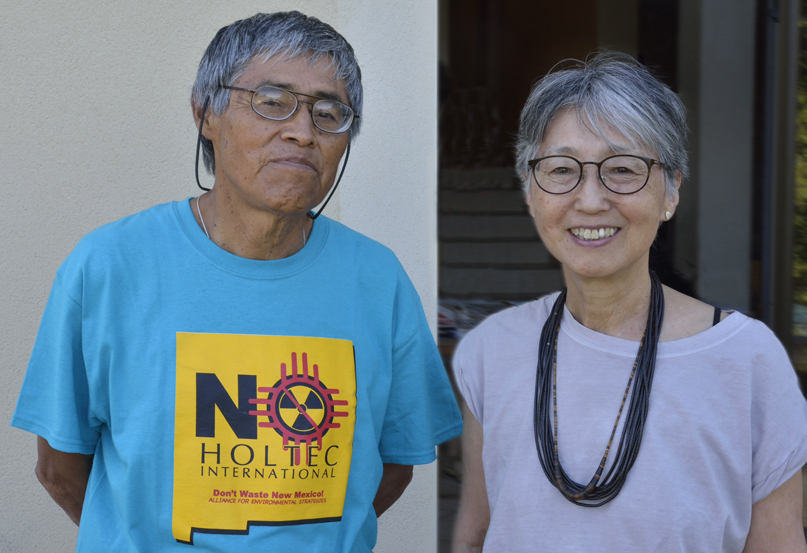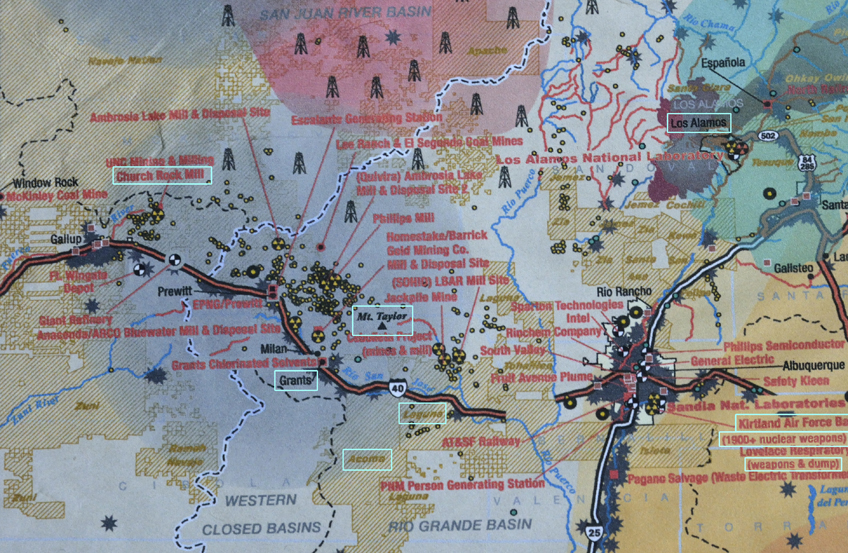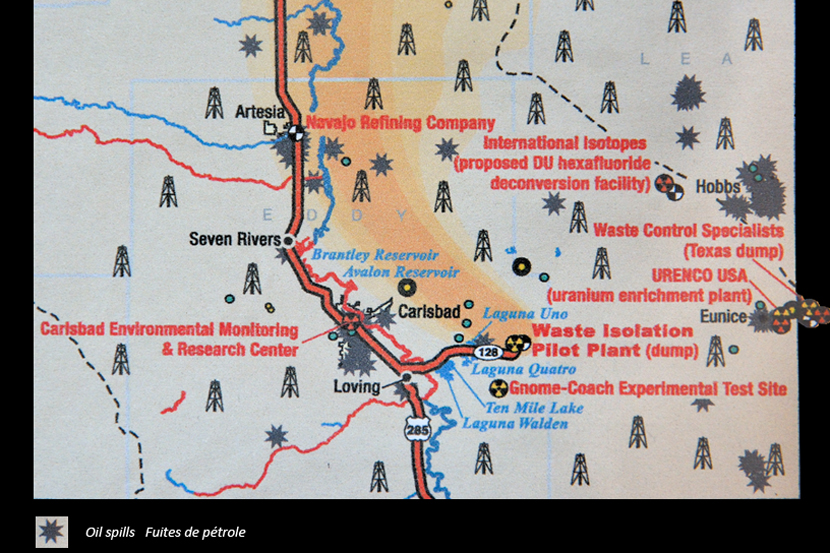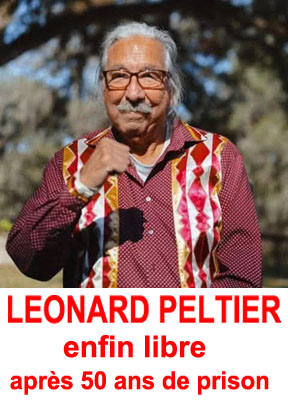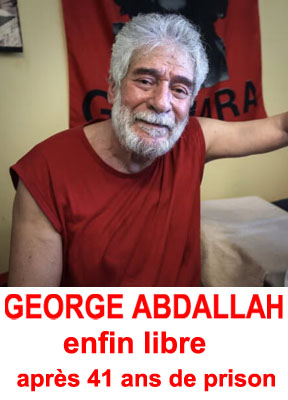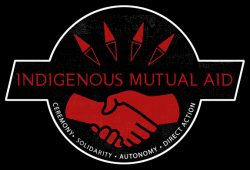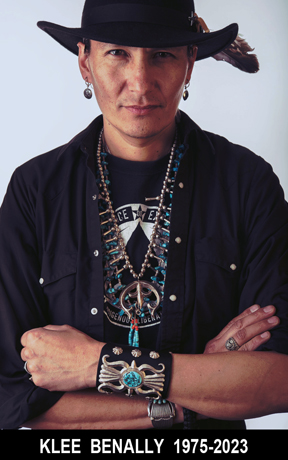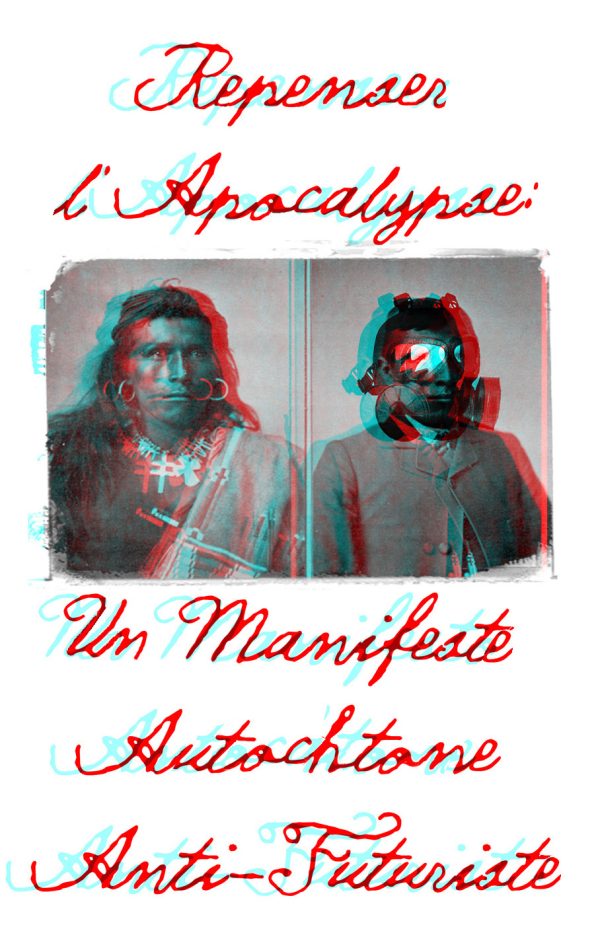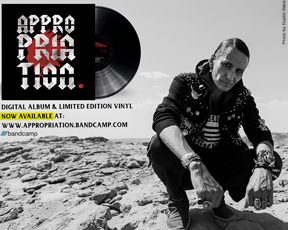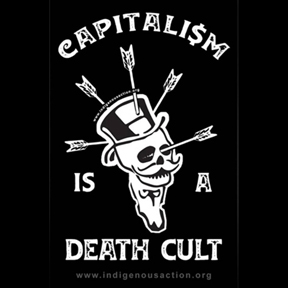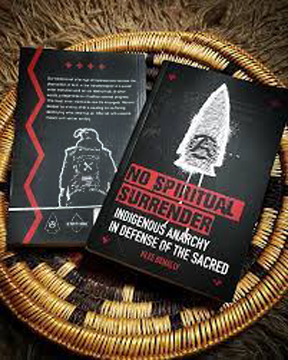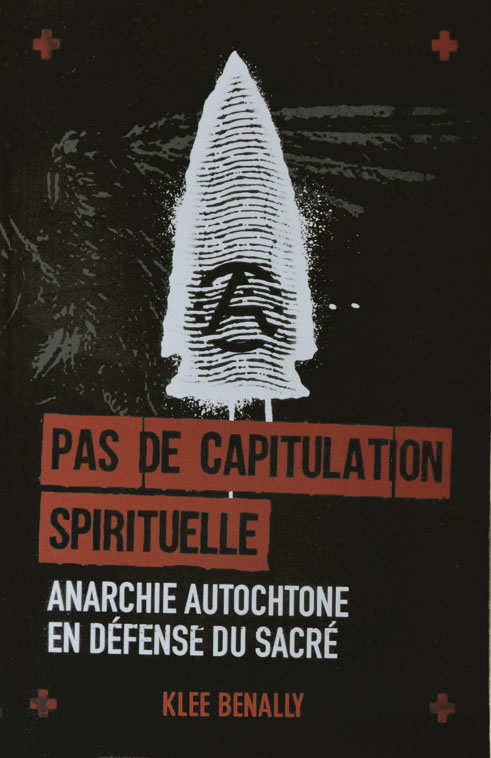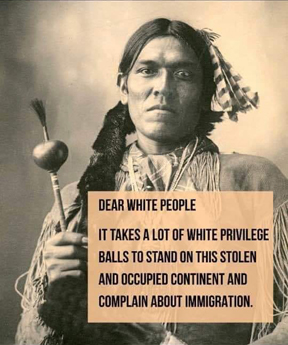Petuuche Gilbert and Kurumi Sugita
PETUUCHE GILBERT, ACOMA, TALKS IN FRANCE ABOUT NUCLEAR ISSUES IN NEW MEXICO
FROM THE SOUTH WEST TO FUKUSHIMA – VIA FRANCE – PEOPLE STRUGGLE AGAINST NUKES
Photo published on July 8th 2019
On July 10th, 2019, Petuuche Gilbert, Acoma, anti-nuclear activist, was invited, during his annual visit to Europe, to a gathering organized by Kurumi Sugita, from Japan, and her husband Jon Gomon, from Michigan. It took place in Isère, southeast of France, where they now live.
Kurumi Sugita is a socio-anthropologist, retired researcher from the French CNRS (National Center for Scientific Research). She has been doing research about the Fukushima victims. She has created the blog and Association “Nos Voisins Lointains 3.11” [Our Far Neighbors] in 2013, with the goal of developing relationships between French and Japanese populations, both threatened by all invading nuclear presence.
Petuuche Gilbert was accompanied by Hervé Courtois, anti-nuclear activist, who has lived in Japan and whose French/Japanese daughter lives in Iwaki, in Fukushima county, about 30 miles from the Fukushima Daiichi power plant. He is a member of the C.A.N., Coalition Against Nukes, and a blogger on Nuclear News and Fukushima 3.11 Watchdogs. In recent years, he traveled several times in the southwest of the U.S. During his last trip, he met Petuuche Gilbert, Leona Morgan and other anti-nuclear Indigenous Activists, at the International Uranium Film Festival in Window Rock, Navajo Nation, Arizona. He did the oral translation of Petuuche’s presentation during the gathering, attended mainly by anti-nuclear activists and people directly threatened by power plants or abandoned uranium mines.
Christine Prat
Isère, France, July 10th, 2019
Article from transcription of Petuuche Gilbert’s presentation
Recording, transcription and photos by Christine Prat
En Français
Most places named in the article are shown on the maps below.
Also published on Censored News
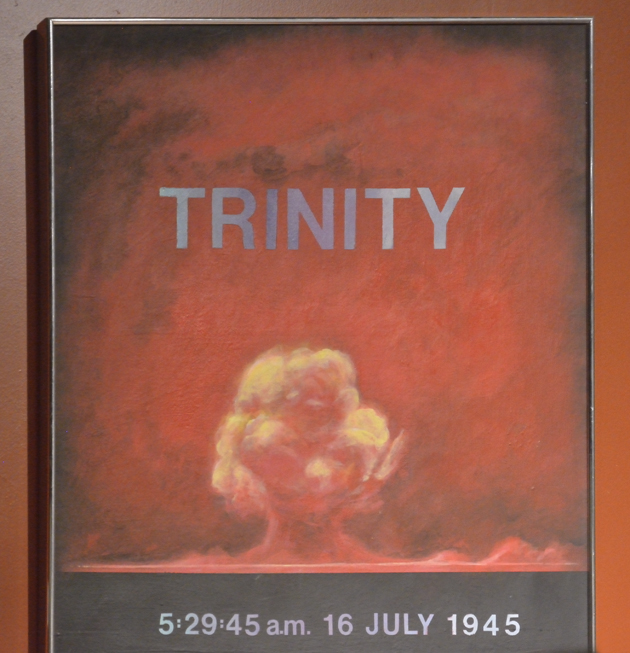 New Mexico is particularly impacted by the nuclear industry. As Petuuche reminded the audience, “the first atomic bomb was made and tested in New Mexico”. It was the ‘Trinity’ bomb, developed by scientists in Los Alamos, and tested in central New Mexico, on the Trinity site, on July 16th, 1945, only a few weeks before bombs were dropped on Hiroshima and Nagasaki. Media still claim that the ‘Trinity Site’ is in the desert of New Mexico, in an unpopulated area, however, it is not so far from the Mescalero Apache Reservation. Everywhere in the world, Indigenous Peoples are the most affected.
New Mexico is particularly impacted by the nuclear industry. As Petuuche reminded the audience, “the first atomic bomb was made and tested in New Mexico”. It was the ‘Trinity’ bomb, developed by scientists in Los Alamos, and tested in central New Mexico, on the Trinity site, on July 16th, 1945, only a few weeks before bombs were dropped on Hiroshima and Nagasaki. Media still claim that the ‘Trinity Site’ is in the desert of New Mexico, in an unpopulated area, however, it is not so far from the Mescalero Apache Reservation. Everywhere in the world, Indigenous Peoples are the most affected.
Uranium
Petuuche began with stating “In New Mexico too, they have the uranium to make the bombs. So, that uranium affected my people, and the land, water and air where we live. This place, Grants Mining District, is where they had the mines and mills for uranium. So, today, I want to talk about uranium, which is the first part of the nuclear fuel chain. And I want to say how it affects the Indigenous Peoples, where I live in the United States.”
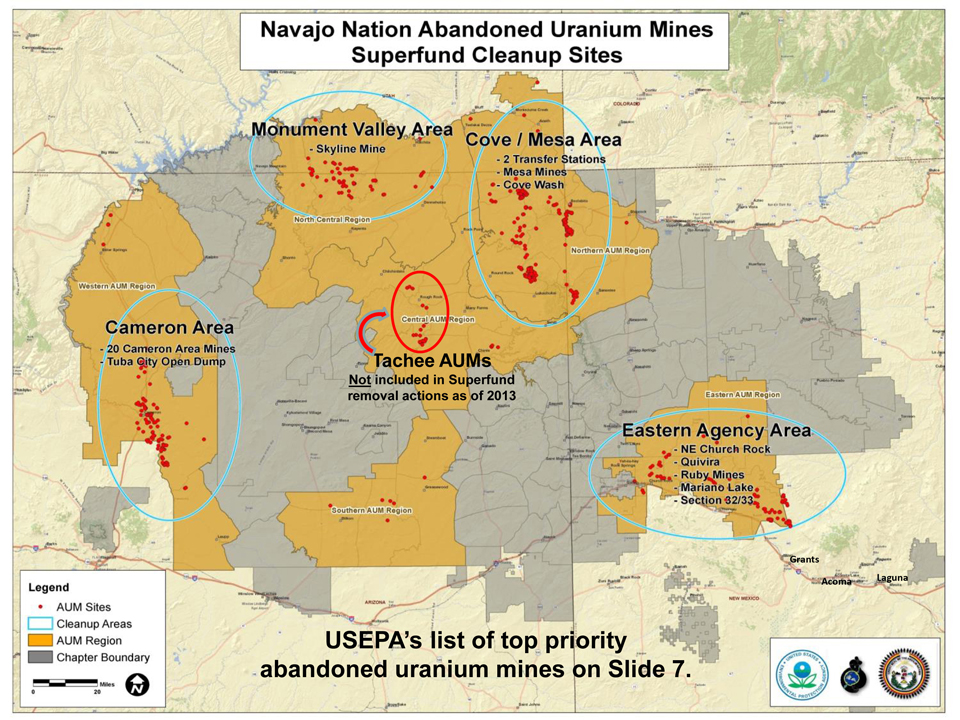 “This whole area is the western United States. So, in the western United States, they say there are almost 15,000 abandoned uranium mines. The word ‘abandoned’ uranium mines is when the mining company has left and no one knows who mined.” Companies often change names and nationality, so that it is very difficult to prosecute them or get compensation from them.
“This whole area is the western United States. So, in the western United States, they say there are almost 15,000 abandoned uranium mines. The word ‘abandoned’ uranium mines is when the mining company has left and no one knows who mined.” Companies often change names and nationality, so that it is very difficult to prosecute them or get compensation from them.
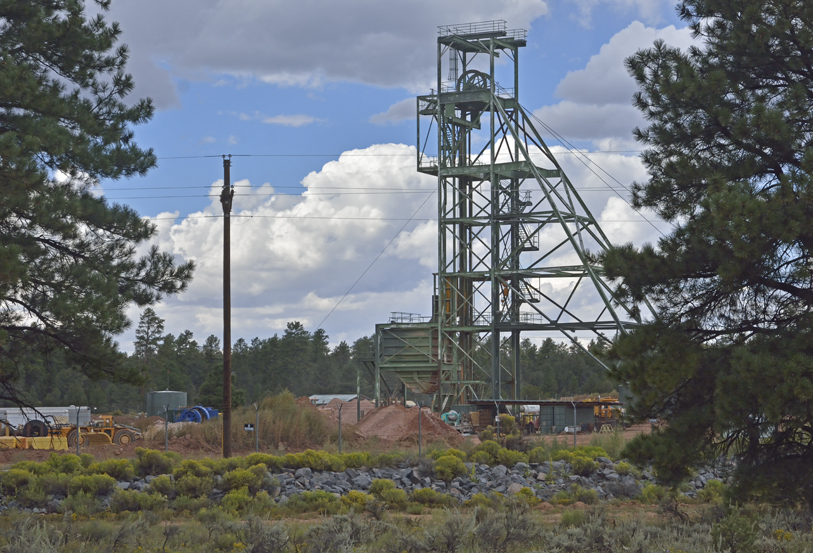 Petuuche went on “They want to start new uranium mining, like in the Grand Canyon, near my home, they want to start new uranium mines. In the United States, there is only one uranium mill, where they make the yellow cake, only one in Utah.”
Petuuche went on “They want to start new uranium mining, like in the Grand Canyon, near my home, they want to start new uranium mines. In the United States, there is only one uranium mill, where they make the yellow cake, only one in Utah.” 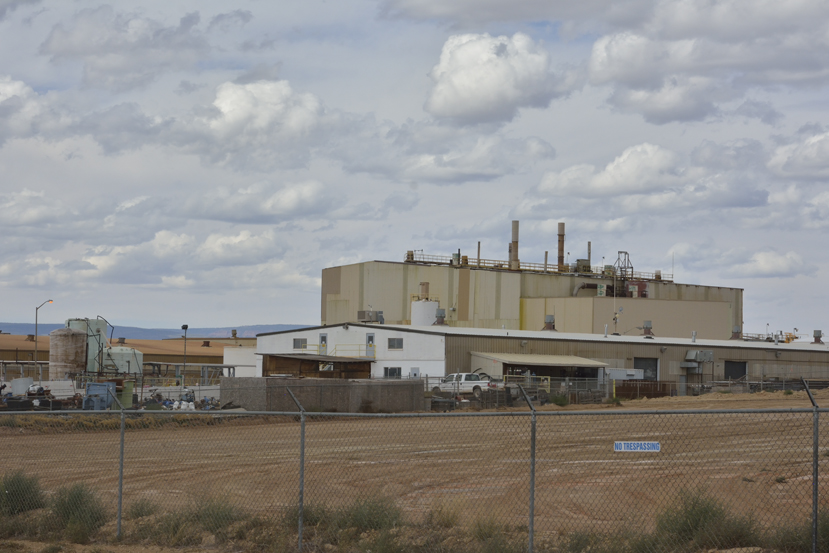 “Next to the uranium mines, in the past, you had five uranium mills to process the uranium ore, to make yellow cake. In the past, when the uranium was mined out of the ground, they had to have mills.” To a question from the audience asking where uranium came from now, Petuuche answered that it was mainly from Canada and Australia. Mr. Courtois added that the territory of the Dene People in Saskatchewan is very contaminated.
“Next to the uranium mines, in the past, you had five uranium mills to process the uranium ore, to make yellow cake. In the past, when the uranium was mined out of the ground, they had to have mills.” To a question from the audience asking where uranium came from now, Petuuche answered that it was mainly from Canada and Australia. Mr. Courtois added that the territory of the Dene People in Saskatchewan is very contaminated.
Petuuche Gilbert started thus with the question “What is uranium?” He went on saying ” It’s an ore that is in the ground. It’s natural, it’s there, it’s in the land, it’s underneath the land. And has always been there for thousands of years, it’s just part of the geology of the land. Some of the Indigenous Peoples, the Navajos and Indigenous Peoples in Canada have names for that uranium. For the Navajos it is łeetso, ‘yellow dirt’.” (Mr. Courtois added that the Dene in Canada call it ‘black stone’, meaning poison).
Then he explained that once uranium is mined, the rocks have to be crushed in a mill to make so-called yellow cake. “Uranium, when it is disturbed, it gets mobilized and spreads all over. It gets in the air, we breathe it, it gets in the water, it goes into the ground. Of course, we drink the water, plants also drink the water that is contaminated by radiations.”
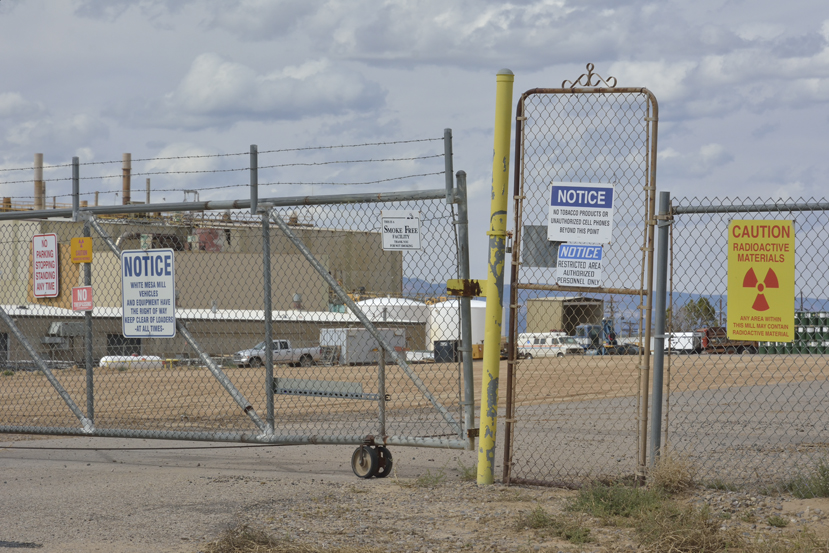 Petuuche explained how uranium gets into your body. “Either on skin, hair, or eating or drinking it.
Petuuche explained how uranium gets into your body. “Either on skin, hair, or eating or drinking it.
The workers who worked in the uranium mill to crush the ore, their clothes got that uranium dust. And they took it home, which affected their wives and their children, and, of course, their homes. Also, the uranium ore produces radon gas.” Radon is a gas produced in uranium mines, as soon as the uranium is disturbed and in contact with air. Radon gas has a very short existence, less than 3 days, after which it changes into very small particles, called ‘radon daughters’, thin enough to penetrate the lungs and other organs to the very bottom. “So, that uranium waste, after the uranium is turned into yellow cake, then uranium 235-238, then it goes into the waste piles. Uranium affects your health. The radiations affect your health. And they say that when you get uranium in your body, it can be many years before you get sick from different types of cancers. Or even, when that uranium is left on the ground, or when they get the atomic bombs tested, 50 years later it still affects the environment and the people. So, today, they are doing studies on women and children and babies, and they are showing that there is uranium in their blood and in their urine. And then, the uranium causes all kinds of diseases.” “The people who lived close to the central area, the people themselves, said what they had been sick from: lung and bone cancers, leukemia, kidney diseases, heart diseases, high blood pressure, diabetes, autoimmune disorders; both from the uranium and the chemicals used to make the yellow cake. So, many of the people, their lungs get affected, or their thyroid gets affected, every part of the body, the kidneys, the stomach… from what they are breathing.”
“Some of these mills were 100 meters away from houses. The people that lived in the villages around the mill, they produced a map that showed that the people in that area died from some type of cancer.”
“Today, they are trying to use another method of taking uranium from the ground, by drilling pipes into the ground and sipping up the ore. But when they do that, it contaminates the water under the ground.”
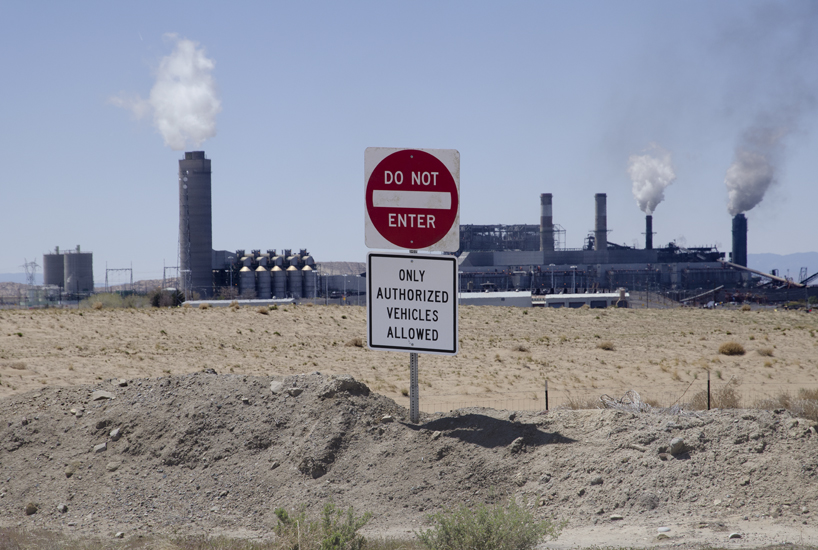 “The other thing about uranium is that it coexists with coal, coal and uranium go together. So, when coal is burnt in power plants, it emits radioactive materials. They also say, when they do fracking for coal, oil and gas, that it also disturbs the uranium and brings it out of the ground.” “One thing about fracking is the waste water, when the water and uranium come out of the ground, they spread it on the ground to hold down the dust. So, the roads can become radioactive.” “Where the uranium goes, is on the land or even in what you drink, just everywhere. Especially when uranium exists and it rains, the water goes down, then it goes into the surface, the animals drink it, the plants too. Then, of course, it contaminates the ground water”.
“The other thing about uranium is that it coexists with coal, coal and uranium go together. So, when coal is burnt in power plants, it emits radioactive materials. They also say, when they do fracking for coal, oil and gas, that it also disturbs the uranium and brings it out of the ground.” “One thing about fracking is the waste water, when the water and uranium come out of the ground, they spread it on the ground to hold down the dust. So, the roads can become radioactive.” “Where the uranium goes, is on the land or even in what you drink, just everywhere. Especially when uranium exists and it rains, the water goes down, then it goes into the surface, the animals drink it, the plants too. Then, of course, it contaminates the ground water”.
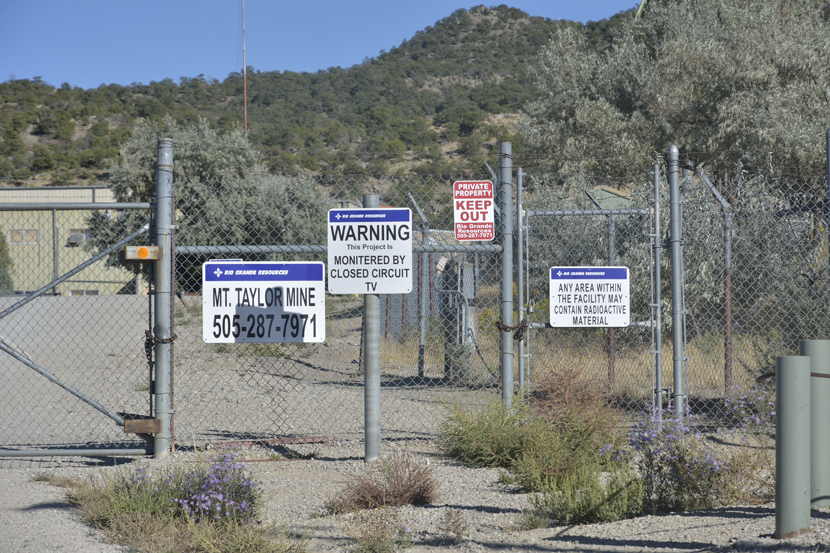 Then Petuuche showed on a map the Grants Uranium District, where he lives [see map below]. “And these are other mines. The Navajo Nation has about 1000 abandoned uranium mines.”
Then Petuuche showed on a map the Grants Uranium District, where he lives [see map below]. “And these are other mines. The Navajo Nation has about 1000 abandoned uranium mines.”
“The United States, when it was making its atomic bombs, collected the uranium from Navajo land. Today, they are still trying to clean those up.” Petuuche Gilbert took part in demonstrations of a group called ‘Clean Up the Mines’.
“Our neighbors, Laguna Pueblo, our sister tribe, at one time had the world’s largest open pit uranium mine. The company like to say that they reclaimed it. But it still contaminates the ground, the soil, the air, the water. During the uranium mining time, from the 1950’s to the 1990’s, in this area here, the small town of Grants called itself the uranium capital of the world.”
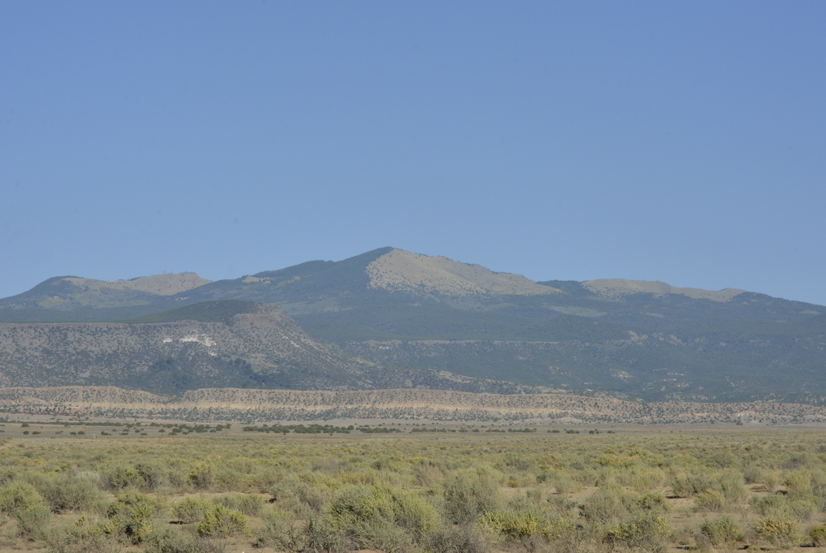 Then, he showed on a map the lava mountains, made of basalt, in the Grants District. “The sacred mountain of my people is right here, it’s a national forest and it is called Mount Taylor. My people, Acoma, live right here.” (see maps below).
Then, he showed on a map the lava mountains, made of basalt, in the Grants District. “The sacred mountain of my people is right here, it’s a national forest and it is called Mount Taylor. My people, Acoma, live right here.” (see maps below).
Contamination until today
“The uranium contamination affects the villages and communities.” “The houses and the mines are just very close. So, the uranium mines and mills, when they were operated, contaminated the people and their homes.” “Then, of course, the people used the water from under the ground, the water is contaminated from radiation.” 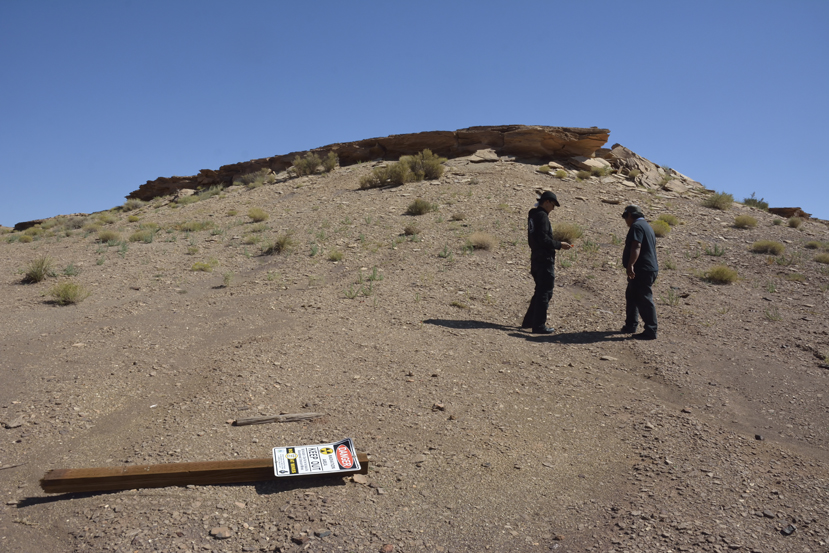 For instance, in the region of Cameron, in the Navajo Nation, people had no other water than that of contaminated wells. Even after they had been told about it, they could not live without water, specially in a desert area. Until very recently, the contaminated areas were not marked, and children played in the uranium waste. “And even after decades of normal uranium mining, the radioactivity still affects the people. The United States government, and the state of New Mexico, have not done any serious health studies. So, today, there are no good scientific studies to show how and why people are dying from some kinds of cancers.”
For instance, in the region of Cameron, in the Navajo Nation, people had no other water than that of contaminated wells. Even after they had been told about it, they could not live without water, specially in a desert area. Until very recently, the contaminated areas were not marked, and children played in the uranium waste. “And even after decades of normal uranium mining, the radioactivity still affects the people. The United States government, and the state of New Mexico, have not done any serious health studies. So, today, there are no good scientific studies to show how and why people are dying from some kinds of cancers.” 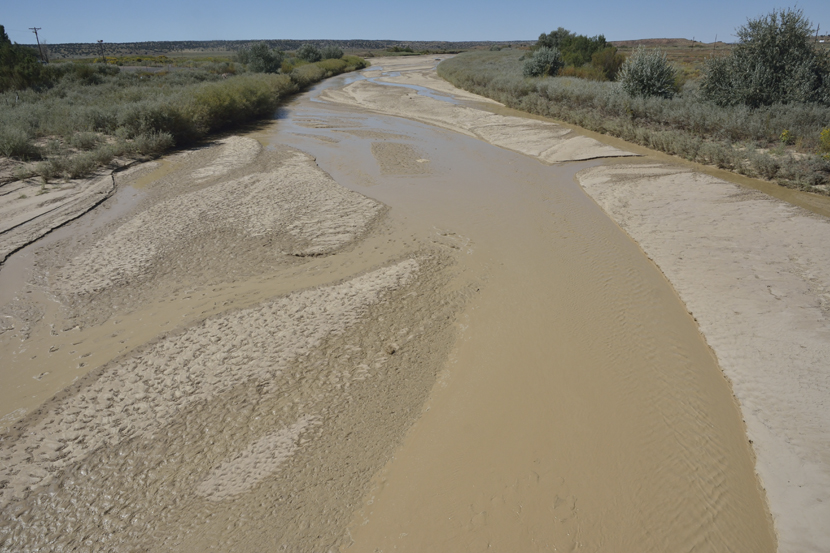 In 2015, it was found that the level of radioactivity in the drink water of an Indigenous community in Sanders, Arizona, was much higher than allowed. People had to collect money to buy bottled water. It took time to explain where the radioactivity came from, ultimately, the only possible explanation was that the radioactivity came from the old mill in Churchrock, where a tailings pond broke in 1979.
In 2015, it was found that the level of radioactivity in the drink water of an Indigenous community in Sanders, Arizona, was much higher than allowed. People had to collect money to buy bottled water. It took time to explain where the radioactivity came from, ultimately, the only possible explanation was that the radioactivity came from the old mill in Churchrock, where a tailings pond broke in 1979.
The Churchrock disaster of 1979
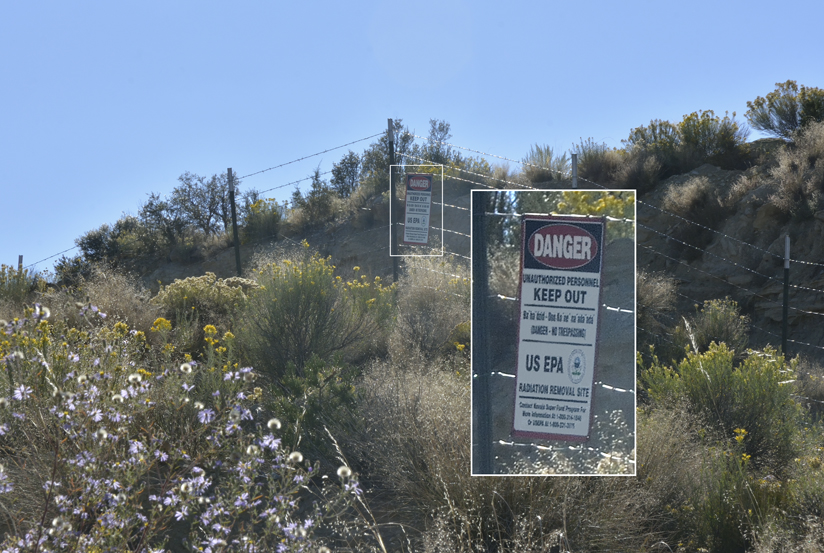 On July 16th, 1979, the tailings pond of a uranium mill in Churchrock, New Mexico, broke. It was an earthen pond, closed by a clay dam. There were cracks in the dam, both Federal Government and the company knew about it, but did nothing. On July 16th, it suddenly broke, causing the greatest uranium disaster in the history of the United States. The contaminated water spilled into an arroyo and then into the Puerco River, a river which is most of the time dry, but can flow after heavy rains, which is what happened in 1979, contaminated water flowing as far as 100 miles into Arizona.
On July 16th, 1979, the tailings pond of a uranium mill in Churchrock, New Mexico, broke. It was an earthen pond, closed by a clay dam. There were cracks in the dam, both Federal Government and the company knew about it, but did nothing. On July 16th, it suddenly broke, causing the greatest uranium disaster in the history of the United States. The contaminated water spilled into an arroyo and then into the Puerco River, a river which is most of the time dry, but can flow after heavy rains, which is what happened in 1979, contaminated water flowing as far as 100 miles into Arizona. 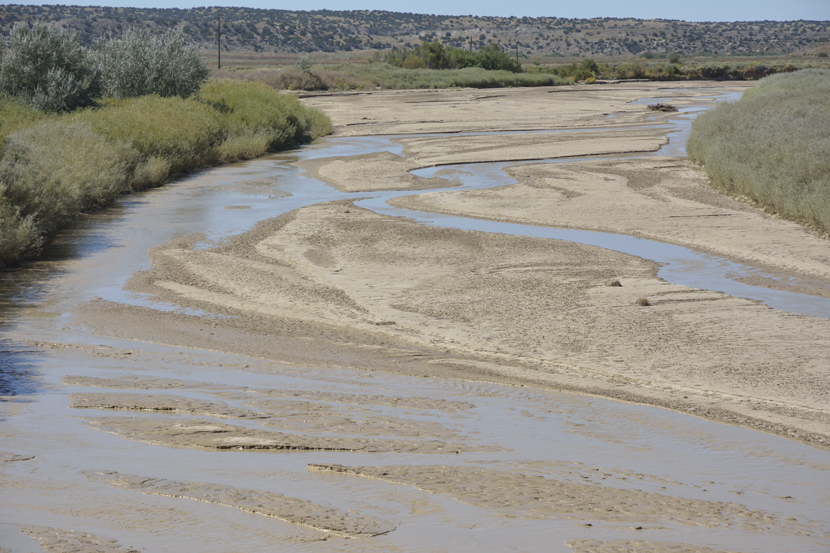 In 2015, there had obviously been heavy rains again, as there was still some water in the river in September, and the sand in the river clearly showed traces of flowing waters.
In 2015, there had obviously been heavy rains again, as there was still some water in the river in September, and the sand in the river clearly showed traces of flowing waters.
The Churchrock disaster took place in the same year as the Three-Miles-Island accident, but although it was much worse, media hardly said anything about it.
Every July 13th, Indigenous Peoples commemorate the disaster. This year, Leona Morgan asked supporting organizations – including the CSIA – to write a declaration of solidarity.
New uranium mines projects
Today, companies are starting new projects for uranium mining in the area. “That’s what we are fighting.” “Because you have no health studies to show that uranium mining and milling is bad for the health and the environment, some people are saying it’s o.k. to do new uranium mining, because people want money and jobs.”
“This [Strathmore] is one of the companies that want to do new uranium mines: it’s called Roca Honda. So, for about ten years, they have been doing a study, a governmental study, to claim this new uranium mine. At one time, Sumitomo of Japan owned about 40% of this mine of Roca Honda. And when we went to Japan, we told them we oppose them to own the mine. And, finally, the Japanese sold their interests. But the United States government, which owns the land where Roca Honda is going to be built, got the U.S. Forest Service say they are going to permit the mine. But there are two other mines that also want to do uranium mining in the same area. And the only reason they are not mining today is because the price of uranium is too low. For my tribe, this is on our land and the mine is going to be right there, on Forest Service land. And it is on the west side of our Sacred Mountain, Mount Taylor.” “This mountain is not only sacred to our tribe, it’s sacred to the Navajo, the Zuni, Laguna and the other 19 tribes of New Mexico. That’s why the tribes call it a Traditional Cultural Property, TCP.” [the status of Traditional Cultural Property is recognized in American law]. “It doesn’t stop mining, but it makes you have a seat at the table to talk. All these lands around are Indigenous lands. That mountain, Mount Taylor, produces water. And it comes from springs. This is the only water that flows every day, every year. And it is very small. It’s a sacred water. So, today, we are still fighting to protect this little water that we have.”
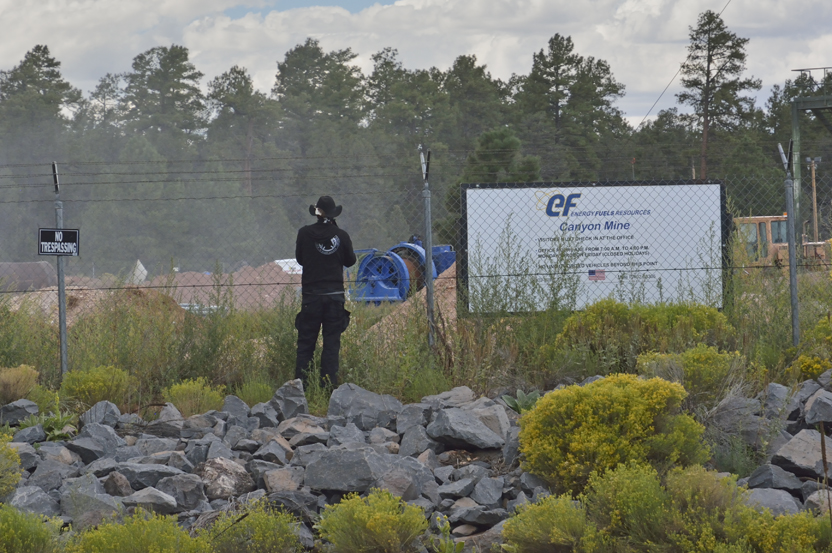 “Or, for example, they want to mine at Grand Canyon.” It directly concerns the Havasupai, who live at the bottom of the Grand Canyon and get their water from the springs running into it, and consider
“Or, for example, they want to mine at Grand Canyon.” It directly concerns the Havasupai, who live at the bottom of the Grand Canyon and get their water from the springs running into it, and consider 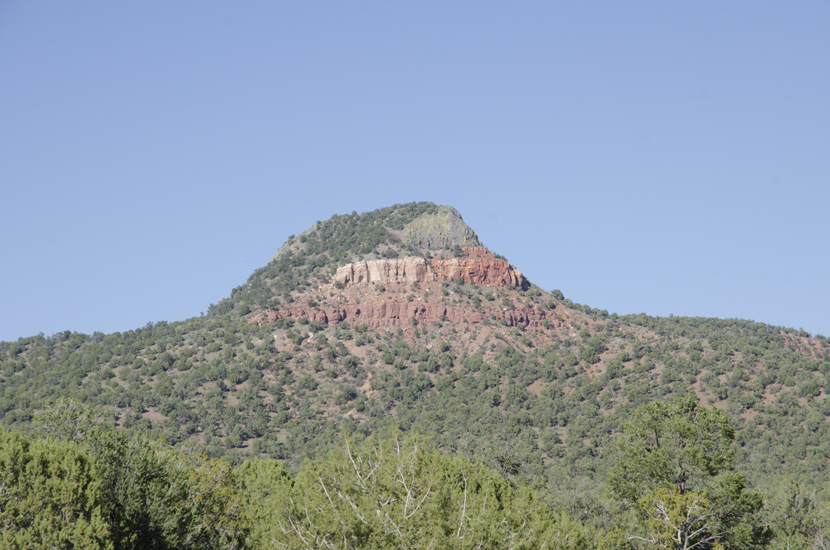 Red Butte – just next to the mine – as their sacred mountain. But the Hopi and other tribes also feel concerned about this sacred area. “They have many friends from all over the United States who are protecting the Grand Canyon and say ‘No uranium mining’. President Obama stopped uranium mining at Grand Canyon, but President Donald Trump opened it back.
Red Butte – just next to the mine – as their sacred mountain. But the Hopi and other tribes also feel concerned about this sacred area. “They have many friends from all over the United States who are protecting the Grand Canyon and say ‘No uranium mining’. President Obama stopped uranium mining at Grand Canyon, but President Donald Trump opened it back.
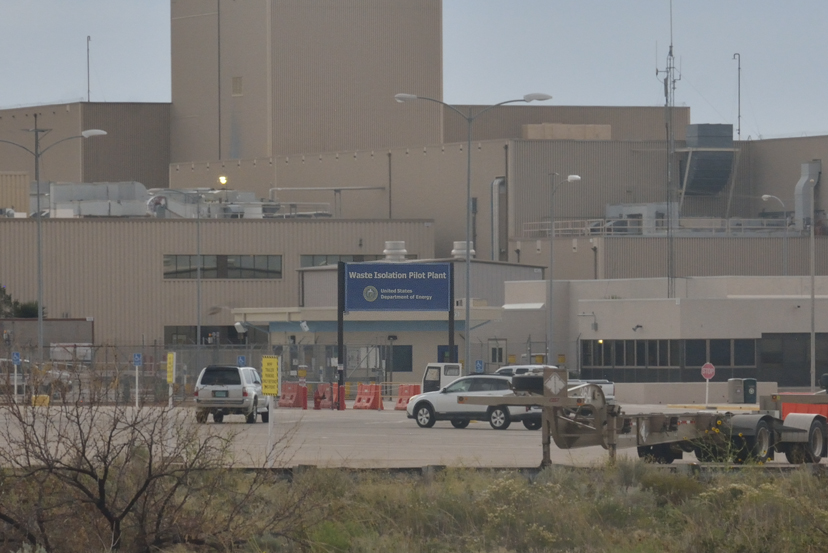 Today, we are fighting in New Mexico, they want to store the spent fuel from the nuclear power plants in New Mexico and Texas. The t-shirt I am wearing, it’s this company, Holtec International. They are working with a Canadian company. They are in New Jersey, and they buy up nuclear power plants for the nuclear waste.
Today, we are fighting in New Mexico, they want to store the spent fuel from the nuclear power plants in New Mexico and Texas. The t-shirt I am wearing, it’s this company, Holtec International. They are working with a Canadian company. They are in New Jersey, and they buy up nuclear power plants for the nuclear waste. 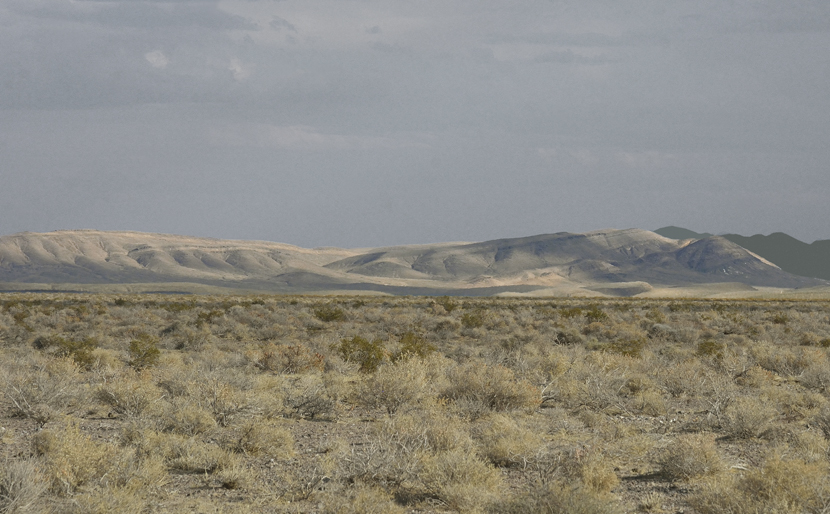 That’s why they were looking at Yucca Mountain, but the state of Nevada doesn’t want it. So, they are still searching for a place, and they say they want a temporary storage place, temporary for hundred, hundred fifty years. So, one of the places is in New Mexico.”
That’s why they were looking at Yucca Mountain, but the state of Nevada doesn’t want it. So, they are still searching for a place, and they say they want a temporary storage place, temporary for hundred, hundred fifty years. So, one of the places is in New Mexico.”
“The United States have 97 power plants. They want to find a place in New Mexico and Texas for nuclear waste and they want to transport it by railroads. So, in New Mexico, the big cities are opposing it, and many of the communities say ‘not through our town’.”
Protests and actions
“Sometimes we have protests, to protect the mountain and to protect the water.” Petuuche showed a slide of runners, explaining that it was a protest run. “People from the Hopi, the Navajo, the other Pueblos join us. Some White people too. We have many allies and supporters that help us, they join us at protests.”
They have also turned to the United Nations. Petuuche explained “My NGO is called Indigenous World Association. We made three presentations to the United Nations. Every year I come to the United Nations. One was the International Covenant on Civil and Political Rights. The next one was the Committee on the Elimination of Racial Discrimination, and the other one was the Universal Political Right, on the fact that Mount Taylor is a sacred mountain and should not be desecrated by uranium mining, in the United States, to respect the rights, but still, the United States doesn’t listen.”
“Activists were against what New Mexico does on nuclear weapons. In New Mexico, there are two national laboratories that research nuclear weapons. And that’s what we are also opposing, using uranium to make nuclear bombs. Even in New Mexico, in Carlsbad, polluted for 50 years, they all agree with that waste deposit site. The governor of New Mexico said no. But it’s the United States government that is fighting the states, fighting the activists, fighting many people. But they used to like the word ‘consent’. New Mexico do not consent, but the government and Holtec are pushing. The Congress of the United States has a bill and 340 Representatives voted to move the nuclear waste to New Mexico and Yucca Mountain. The Senate still needs to vote. So, there is a lot of opposition to it.”
” The Congress of the United States has a bill and 340 Representatives voted to move the nuclear waste to New Mexico and Yucca Mountain. The Senate still needs to vote. So, there is a lot of opposition to it.”
There was also a protest on July 16th, commemorating the first atomic bomb test, ‘Trinity’, in New Mexico.
Petuuche also took part in the protest tour of ‘Clean Up the Mines’.
Conclusion
Petuuche explained why, in his opinion, the United States and their President wanted to resume uranium mining. Today, uranium mining is postponed because the uranium price is much too low for companies to make profits. Still, the United States Government and the President push for resuming uranium mining. President Trump “says we got too much uranium from other countries, we should get it from our own lands. So, he is trying to say uranium ore is a national security risk.” Petuuche explained “The uranium companies that want to do uranium mining are really pressuring the Federal Government, President Trump, to mine uranium. So, the President was declaring that it was a national security risk, in order to mine uranium, to create jobs, and money.” About the companies, he said “They think that uranium power plants need to have the uranium for their fuel. So that, they think, if the United States get more uranium from the United States, that will bring the price of uranium up.”
However, “It’s very expensive to maintain nuclear power plants, even more expensive to build. Only two more nuclear power plants are under construction, in the last 30 years. There have been more power plants, from solar, wind, geothermal, but for President Trump, because he wants to make mining for coal companies, even coal is still good. But electricity generating stations say no, it’s still too expensive and it pollutes the air.”
“I think everybody needs to be educated on the nuclear fuel chain. From the uranium to its use for nuclear plants and nuclear waste, and also nuclear weapons.”
Then Petuuche showed a slide, saying “This one just tells that all people are all indigenous citizens of Earth, all of you, all of us, we have to protect our land, our water, our air and each other. That’s why we do this work to protest nuclear energy. It’s just too dangerous for all land, for all people and for all wild life.”
(click on maps to see larger format)

